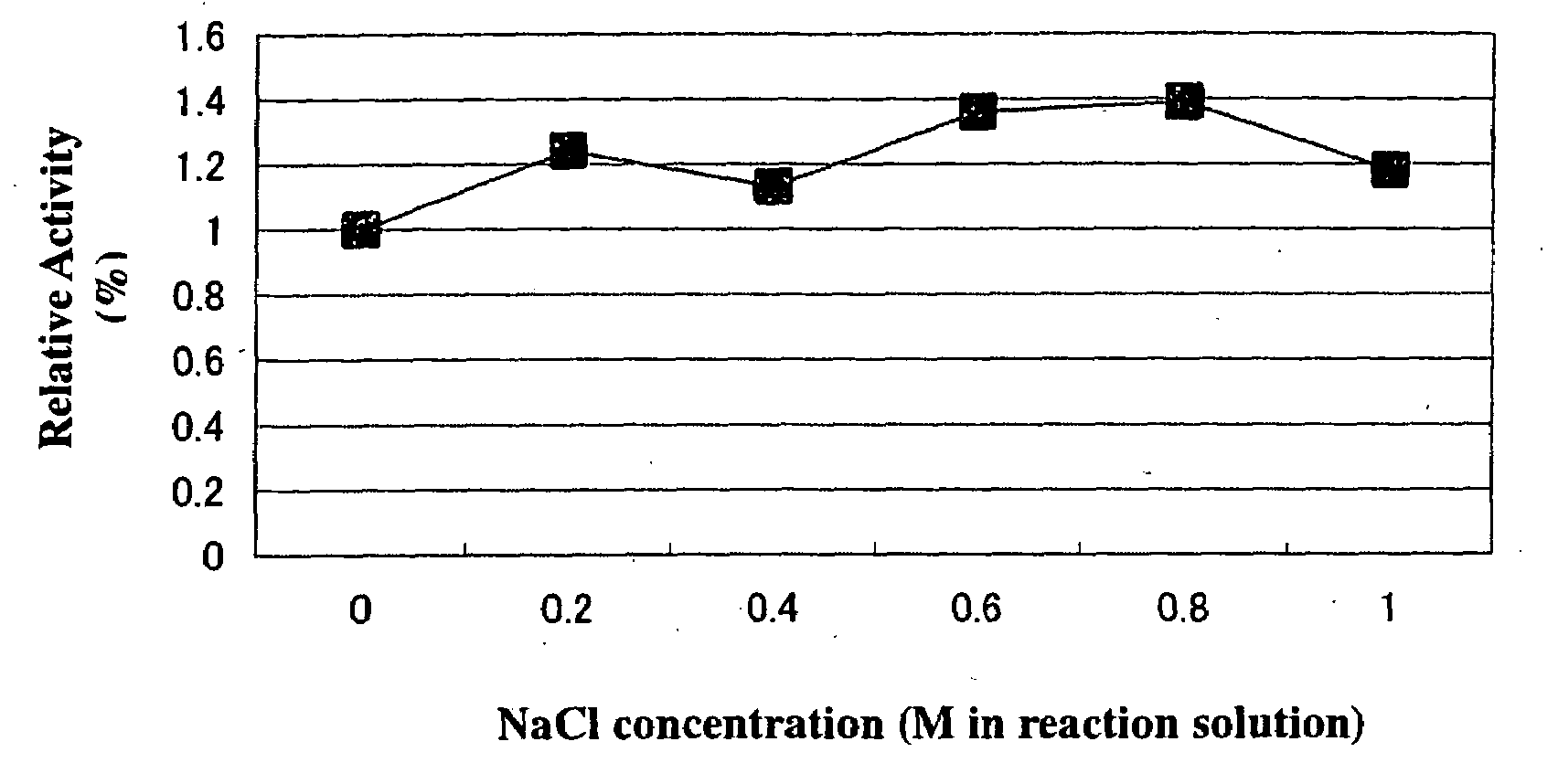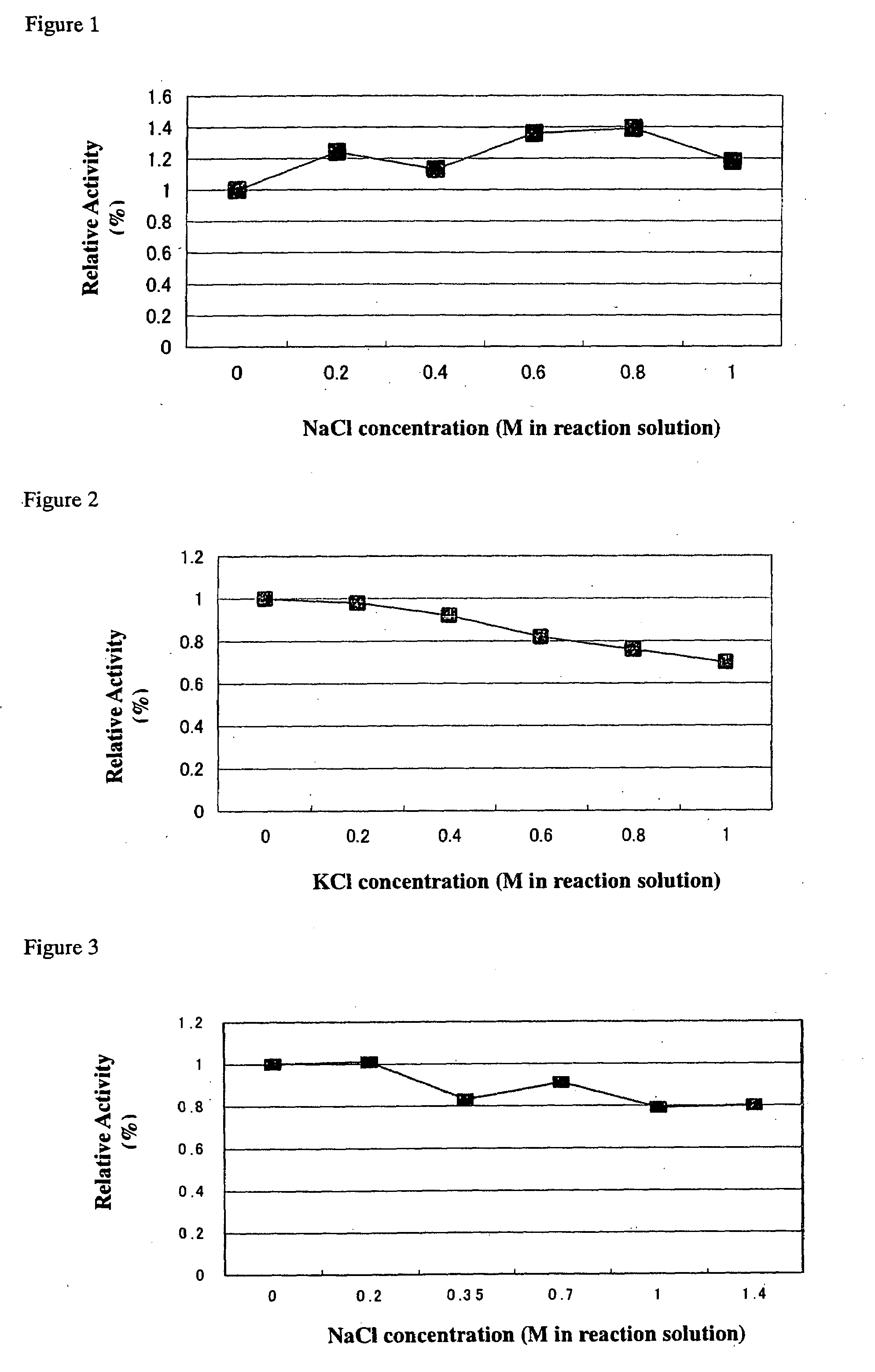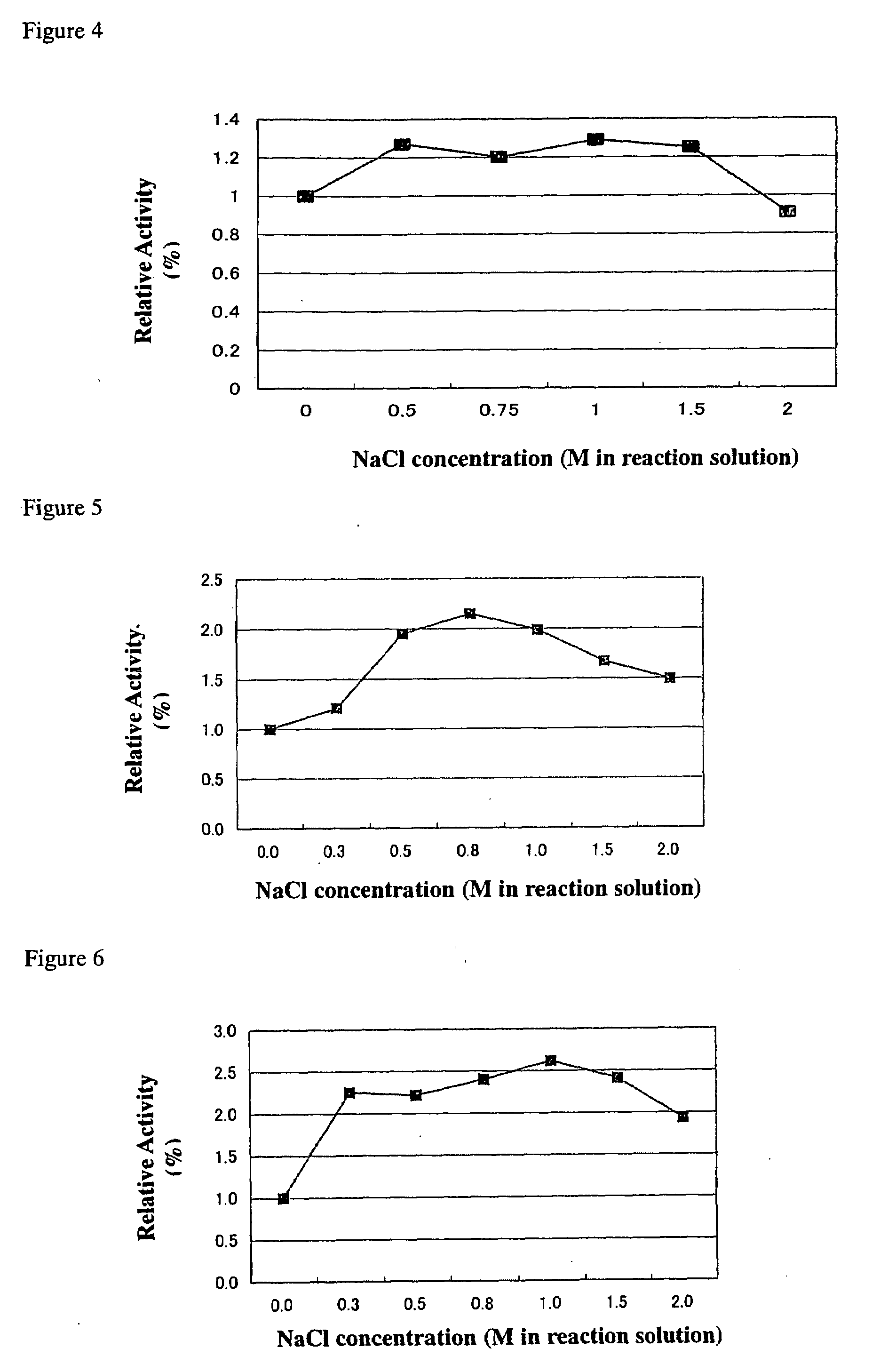Method for improving enzymatic activity of glycosyltransferases
a glycosyltransferase and enzymatic activity technology, applied in the field of glycosyltransferase activity improvement, can solve the problems of long synthetic route and complicated operations, difficult to achieve sugar addition without impairing the functions of proteins and/or lipids in chemical synthetic approaches, and achieve efficient glycosylation. the effect of simple and inexpensive method
- Summary
- Abstract
- Description
- Claims
- Application Information
AI Technical Summary
Benefits of technology
Problems solved by technology
Method used
Image
Examples
reference example 1
Identification and cloning of α2,3-sialyltransferase derived from microorganisms of the Vibrionaceae
Material and Method
reference example 1-1
Screening and Strain Identification of Microorganisms Expressing α2,3-sialyltransferase
[0046]Sea water, sea sand, sea mud, sea fish, or shell was used as an inoculation source. This inoculation source was applied onto agar plates containing marine broth agar 2216 medium (Becton Dickinson) to obtain microorganisms growing at 15° C., 25° C. or 30° C. After the resulting microorganisms were pure-cultured in a routine manner, each microorganism was cultured using a liquid medium composed of marine broth 2216 medium (Becton Dickinson). After the microorganisms were fully grown, the cells were collected from each culture solution by centrifugation. To the collected cells, 20 mM cacodylate buffer (pH 6.0) containing 0.2% Triton X-100 (Kanto Kagaku, Japan) was added, and the cells were suspended therein. This cell suspension was ultrasonicated under ice cooling to homogenize the cells. This cell homogenate was used as an enzyme solution and measured for its sialyltransferase activity, and f...
reference example 1-2
Extraction and Purification of α2,3-sialyltransferase from Photobacterium phosphoreum JT-ISH-467
[0170]From colonies of Photobacterium phosphoreum strain JT-ISH-467 subcultured on marine agar 2216 plates, the cells were collected with a loop, inoculated into 10 ml marine broth 2216 liquid medium and cultured with shaking at 25° C. at 180 rpm for 8 hours.
[0171]Main culturing was accomplished in the following manner. Marine broth 2216 medium (300 ml) supplemented with 20 g / L Bacto Peptone and 4 g / L Bacto Yeast Extract was charged into a 1000 ml baffle flask and sterilized in an autoclave (121° C., 15 minutes). The same medium was prepared in 36 flasks (10.8 L in total). Each flask was inoculated with the above culture solution (10 ml) and cultured with shaking at 25° C. at 180 rpm for 24 hours. The cultured medium was centrifuged to collect the cells (about 60 g on a wet weight basis).
[0172]These cells were suspended in 990 ml of 20 mM cacodylate buffer (pH 6.0) containing 0.2% Triton ...
PUM
| Property | Measurement | Unit |
|---|---|---|
| pH | aaaaa | aaaaa |
| pH | aaaaa | aaaaa |
| pH | aaaaa | aaaaa |
Abstract
Description
Claims
Application Information
 Login to View More
Login to View More - R&D
- Intellectual Property
- Life Sciences
- Materials
- Tech Scout
- Unparalleled Data Quality
- Higher Quality Content
- 60% Fewer Hallucinations
Browse by: Latest US Patents, China's latest patents, Technical Efficacy Thesaurus, Application Domain, Technology Topic, Popular Technical Reports.
© 2025 PatSnap. All rights reserved.Legal|Privacy policy|Modern Slavery Act Transparency Statement|Sitemap|About US| Contact US: help@patsnap.com



